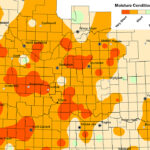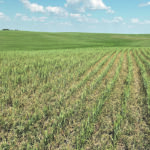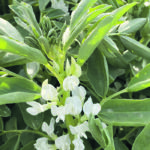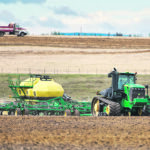Small, shrunken kernels and lower test weights due to severe heat and lack of rain this summer could reduce paycheques at the elevator
A significant number of grain growers in Western Canada have already come to grips with the fact that this year’s drought-affected harvest will be a disappointment in terms of yield. It remains to be seen how the hot, dry growing conditions will affect quality. Derek Bunkowsky, chief grain inspector with the Canadian Grain Commission, says […] Read moreStories by Brian Cross
Grasshoppers pose threat
Drought, plague, fire and pestilence. It seems like hard-luck farmers in Western Canada have seen a little bit of everything this year. Now, you can add grasshopper damage to the growing list of concerns that has drought-stricken growers shaking their heads in disbelief. According to the Prairie Pest Monitoring Network (PPMN), adult grasshopper numbers are […] Read more
New map tracks fusarium spread in Alberta
The fusarium infection surveillance project has put the province’s growers in a better place than they were a few years ago
Alberta Seed Processors has developed a new map and report to help producers and pedigreed seed growers control the spread of fusarium graminearum. Earlier this month, the group released a report and map that shows which areas of Alberta were most heavily impacted by fusarium graminearum, the pathogen that causes fusarium headblight in wheat and […] Read more
Farm group starts grain shipping conversation
Grain Growers of Canada has developed a podcast and hotline in effort to answer questions about grain handling sector
An organization that bills itself as the national voice of Canadian grain farmers is launching a new campaign aimed at answering important questions about the country’s grain handling and transportation system. Grain Growers of Canada announced last week that it plans to launch a new podcast and hotline that delves into grain-shipping issues and answers […] Read more
Sask. soil moisture levels come up short
More than nine out of every 10 acres of cropland, pasture and hayland in Saskatchewan are either “short” or “very short” on topsoil moisture, according to the province’s latest provincial crop report released earlier today. In the crop report for the week ending July 19, Saskatchewan Agriculture said the province’s crops remain “extremely stressed from […] Read more

Writing on the wall for prairie crops
Crunch, crunch, crunch — that is the sound of parched prairie crops burning to a crisp under an intense summer heat wave that continued to bake western Canadian crops this week. It might also describe the financial situation that some farmers will face this year as yield and income prospects dwindle quickly and the full […] Read more

Farmers renew call for more comprehensive market data
Federal government asked to establish an Export Sales Reporting Program to improve market transparency for producers
Farm groups in Saskatchewan have renewed calls for better grain markets and export information. Last week, a coalition of farmer-directed organizations including the Saskatchewan Wheat Development Commission (SaskWheat), the Saskatchewan Barley Development Commission, SaskCanola, SaskFlax, SaskOats, Saskatchewan Pulse Growers, and the Agricultural Producers Association of Saskatchewan (APAS) called on the federal government to establish an […] Read more
Fababean fractionation plant to produce protein in Alta.
Fababean growers in Western Canada will soon gain access to another domestic market for their crop. Faba Canada recently announced that it has acquired a milling facility near Legal, Alta., north of Edmonton. The facility will fractionate fababeans and produce a high-quality protein concentrate. The mill is the former Mountain Meadows Pea Butter facility. Brad […] Read more

Roundtable revises grain code of practice
An amended second version should be complete later this year and will be the subject of another round of consultations
Work aimed at developing a Responsible Grain Code of Practice for grain farmers will continue throughout the summer but it could be months before a second draft is available for review. Late last year, the Canadian Roundtable for Sustainable Crops (CRSC) developed a first draft of the code. It contains voluntary guidelines aimed at encouraging […] Read more
On the hunt for new ways to use pulse starch
University of Saskatchewan researchers want to improve how pulse crops are processed into novel food ingredients
Pulse crops grown in Saskatchewan, including peas, fababeans, chickpeas and lentils, have long been recognized as a safe and nutritious food source. Now, researchers at the University of Saskatchewan are looking at novel uses for pulse starches that could result in the creation of new environmentally friendly products such as bioplastics, biofilms and plant-based biomedical […] Read more



